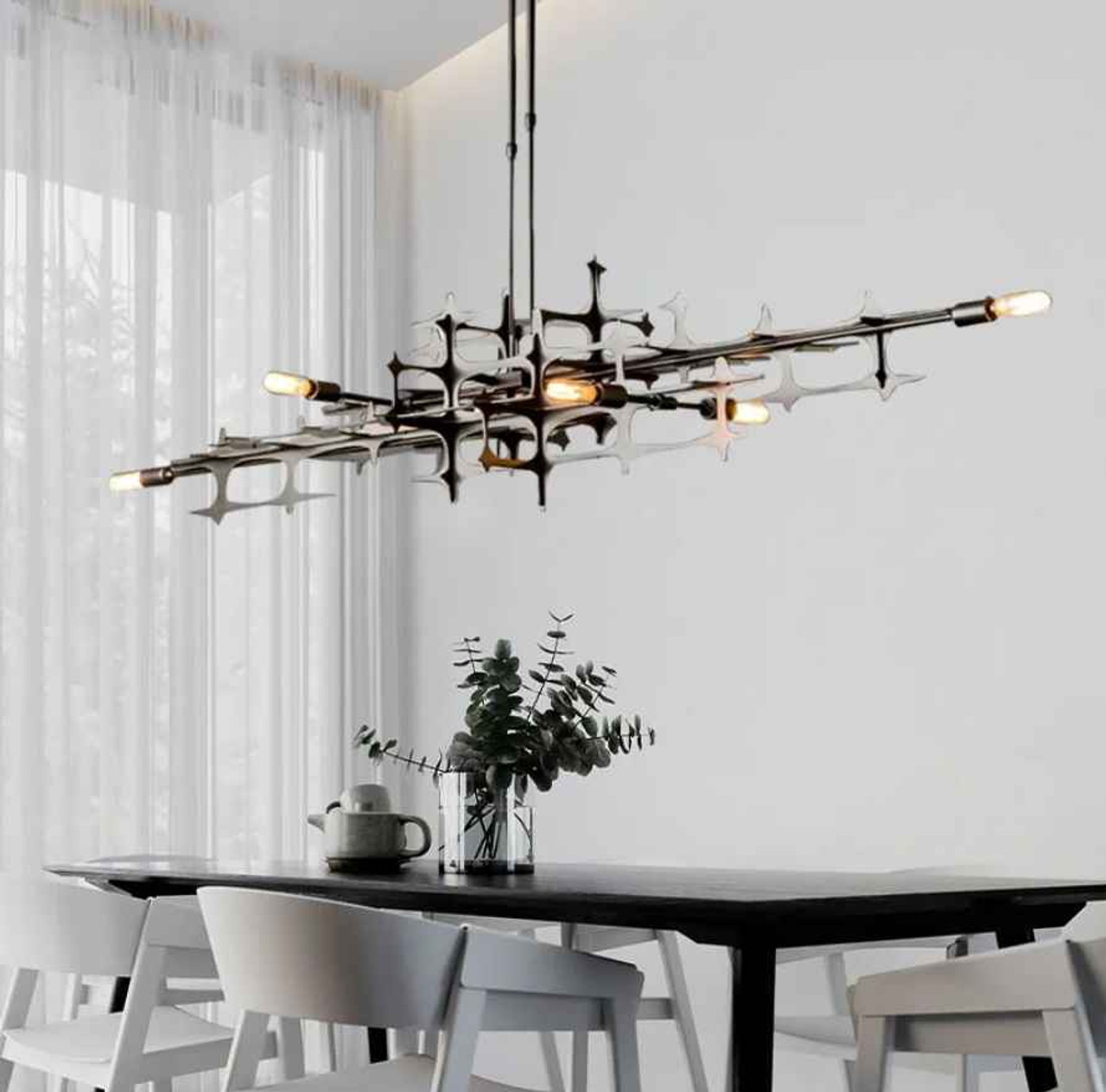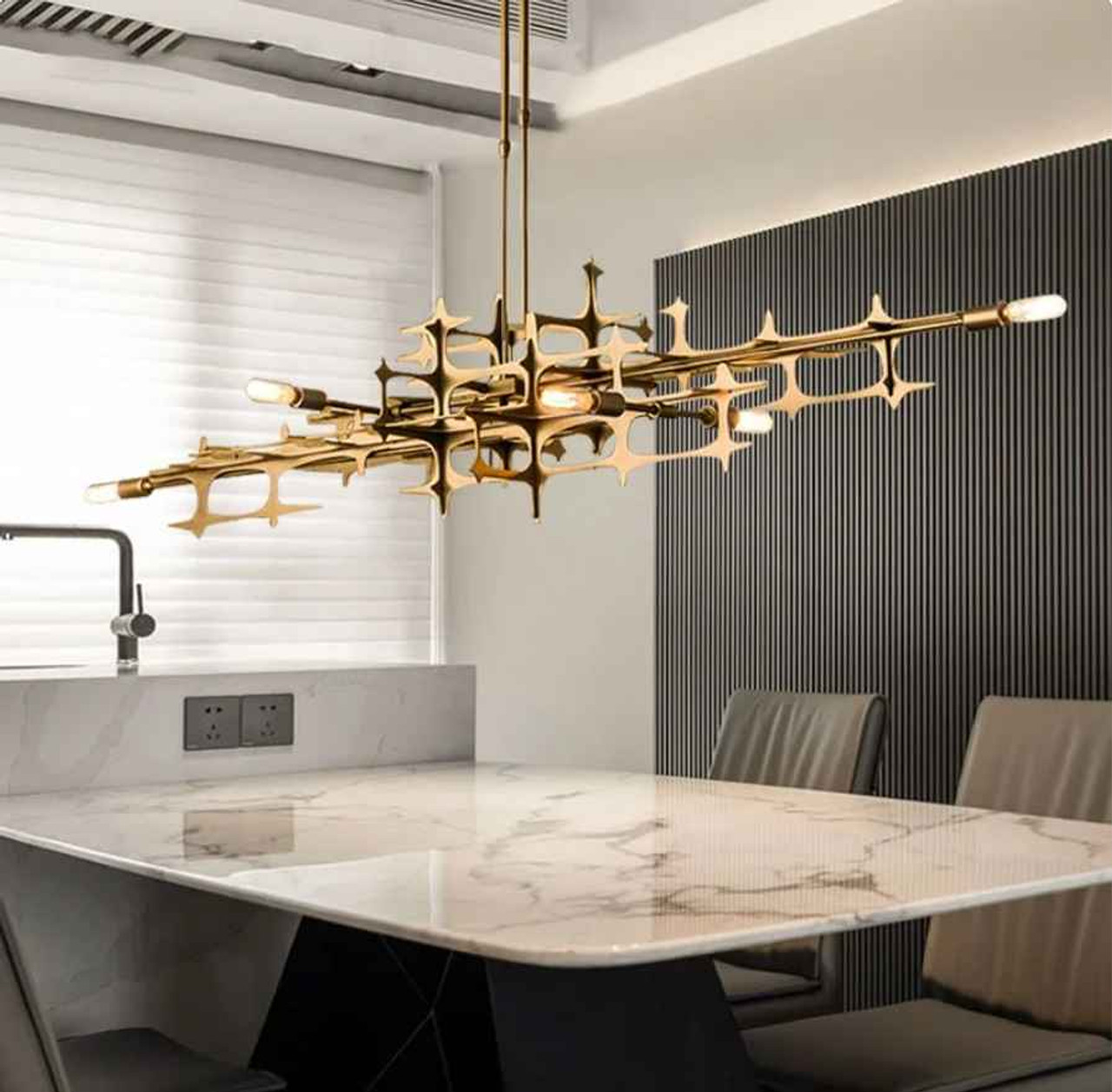Can any light fixture be made dimmable?
Aug 01, 2024
Can any light fixture be made dimmable?
The answer to the question - Can any light fixture be made dimmable? Is, Not every light fixture can be made dimmable. Whether a light fixture can be dimmed depends on the type of bulb and the fixture itself. Incandescent bulbs are inherently dimmable, while LED bulbs, fluorescent bulbs, and some types of halogen bulbs require specific dimmable versions to work with dimmer switches.
In addition to the bulb compatibility, the fixture itself should also support dimming functionality. Some fixtures are designed with built-in dimming capabilities, while others may require the installation of a dimmable driver or module to enable dimming functionality.
It's important to check the specifications and labeling of both the bulb and the fixture to determine if they are dimmable or compatible with dimming systems. If unsure, consult the manufacturer's documentation or seek advice from a professional electrician to ensure proper compatibility and installation.
So to some up, can any light fixture be made dimmable?
- Halogen mostly likely.
- LED If requires dimmable rated bulbs, if the light has a driver the driver must be dimmable rated along with an led dimmable rated wall switch.
What is an LED driver?
An LED driver, also known as an LED power supply or LED transformer, is an electronic device that regulates the power and current supplied to an LED lighting fixture. LED drivers are essential components in LED lighting systems as they convert the higher voltage AC (alternating current) power from the electrical source to the lower voltage DC (direct current) power required by the LEDs.
LED drivers ensure that the LEDs receive a stable and appropriate amount of electrical current for optimal performance, efficiency, and longevity. They help prevent voltage fluctuations and protect the LEDs from voltage spikes or surges, which can potentially damage or degrade the LED chips.
LED drivers also provide other functions such as dimming control, allowing LED lighting fixtures to be used with dimmer switches for adjustable brightness levels. They may include compatibility with various dimming technologies, such as phase-cut (leading-edge) or trailing-edge dimming, depending on the specific requirements of the LED fixture and the dimming system.
LED drivers come in various forms, including constant-current drivers and constant-voltage drivers, depending on the specific type of LED lighting fixture and its electrical requirements. They are typically installed within the lighting fixture itself or located remotely, depending on the design and installation requirements.
It's important to select the appropriate LED driver that matches the electrical specifications of the LED lighting fixture to ensure proper functionality, compatibility, and safety. If unsure, it is recommended to consult the manufacturer's guidelines or seek advice from a professional electrician when dealing with LED drivers.
Do I need to use an led driver with a light fixture?
Whether or not you need to use an LED driver with a light fixture depends on the specific type of light fixture and the type of LED bulbs being used. Here are some common scenarios: 1. Integrated LED Fixtures: Many modern LED fixtures, such as recessed downlights or LED panels, come with built-in LED drivers. In these cases, the LED driver is already included within the fixture, and you do not need to use an additional LED driver. 2. Retrofit LED Bulbs: If you are using retrofit LED bulbs to replace traditional incandescent or halogen bulbs in an existing fixture, you may not need an LED driver. Retrofit LED bulbs are designed to be compatible with standard sockets and can work directly with the existing electrical infrastructure. 3. Low Voltage LED Fixtures: Some LED fixtures operate on low voltage, typically 12V or 24V DC. In such cases, an LED driver is required to convert the higher voltage AC power from the electrical source to the lower voltage DC power needed by the fixture. These types of fixtures will often include a built-in LED driver or require an external LED driver for proper operation. 4. Dimmable LED Fixtures: If you intend to dim an LED fixture, you will likely need a compatible LED driver or dimmable LED bulbs that are specifically designed for dimming. Dimmable LED drivers or bulbs are essential for controlling the brightness level of the fixture when used with a dimmer switch. It's important to consult the manufacturer's specifications and guidelines for the specific light fixture and LED bulbs being used. They will provide information on whether an LED driver is required, built-in, or compatible with the fixture. If you are uncertain, it is recommended to seek advice from a professional electrician to ensure the proper setup and compatibility for your specific lighting system.
What are LED dimmer switches?
LED dimmer switches are designed specifically for use with LED lighting fixtures, including LED chandeliers.
They allow you to adjust the brightness level of the LEDs, providing flexibility in creating different lighting atmospheres. LED dimmer switches work by controlling the electrical current supplied to the LED lights. Unlike traditional incandescent or halogen bulbs, LEDs have different electrical requirements, and not all dimmer switches are compatible with LED lighting. When choosing an LED dimmer switch, consider the following factors:
- Compatibility: Ensure that the dimmer switch is specifically designed for use with LED lights. Look for dimmer switches labeled as "LED compatible" or "LED dimmable."
- Wattage and Load: Check the dimmer switch's wattage rating to ensure it can handle the total wattage of the LED bulbs connected to the chandelier. It is crucial to consider the combined wattage of all the LEDs on the circuit to avoid overloading the switch.
- Dimming Range: LED dimmer switches typically have a specified dimming range. Some switches offer a wide range of dimming options, while others may have limited settings. Choose a switch that provides the desired range of brightness control.
- Type of Dimming: LED dimmer switches may use different types of dimming technologies, such as phase-cut (leading-edge) or trailing-edge dimming. Ensure that the switch's dimming technology is compatible with the LEDs in your chandelier.
- It's important to note that not all LED bulbs or LED chandeliers are dimmable. Check the specifications of your LED chandelier and LED bulbs to ensure they are designed for dimming capabilities. For proper installation and compatibility assessment, it is recommended to consult with a professional electrician who can guide you in selecting and installing an LED dimmer switch that works effectively and safely with your LED chandelier.
While your here, check out our dimmable led ring chandelier!
What are leading edge dimming switches?
Leading edge dimming switches are devices used to control the intensity of electrical lighting by adjusting the amount of voltage supplied to the light source. They are commonly used with incandescent bulbs, as well as some types of halogen lamps and magnetic low-voltage transformers.
The term "leading edge" refers to the portion of the electrical waveform where the voltage starts to rise. In the context of dimming, leading edge dimmers work by cutting off a portion of the waveform at the beginning, reducing the amount of voltage supplied to the light source and thereby dimming the light. This method is also known as phase control or forward phase dimming.
Leading edge dimming switches typically use a triac, a type of semiconductor device, to control the flow of electricity to the light source. The triac acts as a switch that can be triggered at different points in the AC (alternating current) waveform to adjust the brightness of the light.
It's worth noting that leading edge dimming switches may not be suitable for all types of light sources. They can cause compatibility issues and undesirable effects, such as flickering or buzzing, when used with certain LED (light-emitting diode) bulbs or electronic low-voltage transformers. In these cases, trailing edge dimming switches, which work by cutting off the trailing edge of the waveform, are often recommended as a more suitable alternative.
What are trailing edge dimming switches?
Trailing edge dimming switches, also known as reverse phase or electronic low-voltage (ELV) dimmers, are devices used to control the brightness of electrical lighting. Unlike leading edge dimming switches, which cut off the voltage waveform at the beginning, trailing edge dimmers cut off the waveform at the end.
Trailing edge dimming switches are specifically designed for use with LED (light-emitting diode) bulbs, as well as certain types of electronic low-voltage transformers and other sensitive light sources. These devices often require a different type of dimming technique compared to traditional incandescent bulbs.
When you adjust the brightness using a trailing edge dimming switch, it gradually reduces the amount of voltage supplied to the light source by cutting off the trailing edge of the AC (alternating current) waveform. This method helps to minimize flickering, buzzing, and other compatibility issues commonly associated with certain LED bulbs.
Trailing edge dimming switches typically utilize electronic components, such as MOSFETs (Metal-Oxide-Semiconductor Field-Effect Transistors), to control the flow of electricity and provide smooth dimming performance. They are known for their ability to deliver precise dimming control and are often recommended for applications where sensitive lighting technology is involved.
It's important to note that not all dimming switches are compatible with trailing edge dimming. It's essential to check the specifications and compatibility of the dimmer switch with the specific light sources you intend to use to ensure proper operation and avoid any potential issues.
Leading Edge vs Trailing Edge Dimmers
Leading edge and trailing edge dimmers are two different types of dimming technologies used to control the brightness of electrical lighting. Here's a comparison between the two: Leading Edge Dimmers: 1. Operation: Leading edge dimmers work by cutting off a portion of the voltage waveform at the beginning (leading edge) of each AC cycle. 2. Compatibility: They are commonly used with traditional incandescent bulbs, some halogen lamps, and magnetic low-voltage transformers. 3. Control: Leading edge dimmers offer a basic form of dimming control and may not provide as smooth or precise dimming performance as trailing edge dimmers. 4. Compatibility Issues: They can cause compatibility issues with certain LED bulbs and electronic low-voltage transformers, leading to flickering, buzzing, or reduced bulb lifespan. 5. Cost: Leading edge dimmers are generally less expensive and more widely available compared to trailing edge dimmers. Trailing Edge Dimmers: 1. Operation: Trailing edge dimmers work by cutting off a portion of the voltage waveform at the end (trailing edge) of each AC cycle. 2. Compatibility: They are specifically designed for use with LED bulbs, electronic low-voltage transformers, and other sensitive light sources. 3. Control: Trailing edge dimmers offer smoother and more precise dimming control, allowing for finer adjustments and reduced flickering. 4. Compatibility Benefits: They are better suited for LED bulbs and electronic transformers, resulting in improved compatibility and performance. 5. Cost: Trailing edge dimmers tend to be slightly more expensive than leading edge dimmers due to their advanced dimming technology. When choosing between leading edge and trailing edge dimmers, it's important to consider the specific light sources you intend to use and their compatibility requirements. Some dimmers offer both leading edge and trailing edge dimming capabilities, allowing flexibility in accommodating different types of lighting technologies.
To Sum Up
Trailing edge dimmers are the modern choice for LED dimming switches, they are smoother and silent in operation. However when purchasing dimmable LED bulbs you must make sure the dimming switch is going to be compatible with the bulbs.
Finally halogen dimmer switches are not compatible with LED switches and must be changed.



